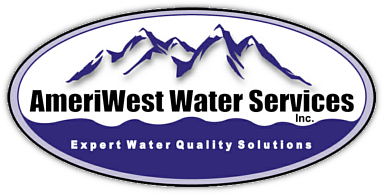The presence of microorganisms in wells and distribution systems is referred to as biofilm. Certain microorganisms related to Fe and Mn and sulfur have long been observed and implicated with staining problems. First noted in literature in 1833, “iron bacteria” has long been associated with problems in the delivery of quality water for domestic use.
Iron bacteria is a generalized name for a wide ranging family of organisms classified as aerobic bacteria (living in the presence of oxygen) and anaerobic bacteria (living in or active in the absence of free oxygen such as in water). Iron bacteria have the ability to extract iron and manganese from water and deposit it in their slime or thread-like sheaths or on their surfaces. These bacteria may also be able to obtain iron from the pipe itself if it is made of iron. Other similar types of sulfur organisms are also capable of using sulfate in water as an energy source and producing hydrogen sulfide “rotten egg” odor. Sulfur bacteria also can deposit objectionable dark slimes in mains.
Iron related bacteria are generally known to:
- Pit and corrode pipe systems, attacking pipes to obtain iron.
- Lower the pH of the water
- Cause taste & odor problems (musty, metallic & rotten egg).
- Cause turbidity
- Discolor & cause staining (i.e. dark slime growths in toilet flush tanks.)
- Clog pipes and reduce water flows.
Iron related bacteria are usually associated with the generation of thick brown to black slimes. These slimes undergo a number of growth phases starting with attachment to the surface. Eventually, limited colonization over the surface ultimately produces a large polymeric “umbrella” or biofilm that protects the bacteria to some extent from adverse conditions such as chlorination. This biofilm produces finger like processes that extend into the water causing friction and ultimately a restricted flow and plugging. When left to grow without restraint, their accumulation of dead microbial bodies and other debris may lead to pipe closures and line failures due to corrosion.
Studies have shown that Coliform bacteria can grow and hide inside Biofilms on iron pipes, thus escaping disinfection by chlorine. Free chlorine doses as high as 5.0 mg/L for two weeks did not affect significant changes in viability. Application of blended phosphates having the ability to control corrosion and sequester iron and manganese has been shown to improve the efficiency of chlorine disinfection and decrease viable counts of bacteria including coliforms in biofilms. Additionally, systems with no detectable levels of phosphate often have higher rates of Coliform occurrence. This finding would dispute the idea that adding phosphate to the water may contribute to or worsen Coliform or biofilm occurrences. When chlorine is used in addition to specially blended phosphates, slimes and encrustation’s can be slowly controlled and reduced. Manufacturers of polyphosphate products suggest that the cleansing effect of special phosphates can slowly help the chlorine penetrate deeper into the slime growths and control the growth and spread of clogging cells. Polyphosphates specifically sequester soluble iron, manganese, calcium and silica and dissolve existing scale and deposits, thus eliminating food for bacterial growth. Proper sequestering is achieved when the chemical stabilization of the minerals occurs in such a way as to keep them suspended and able to be moved through the pipes without depositing on the surfaces.
Many manufacturers claim that bacteria counts in the distribution system can be lowered after extended treatment.
